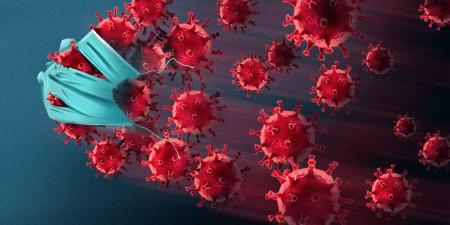Abstract
This commentary responds to a case about diethylene glycol-contaminated glycerin in cough syrup. Glycerin is a commonly used excipient in medicines to improve texture and taste. Excipients are typically pharmacologically inactive ingredients contained in prescription and over-the-counter drugs that play a critical role in the delivery, effectiveness, and stability of active drug substances. The commentary first canvasses how contaminants enter the excipient supply chains. One way is by misleading labeling or intentional adulteration by manufacturers or suppliers. Another way is by human or systemic error. This commentary then discusses quality control testing and suggests the ethical and clinical importance of increased transparency in excipient supply chains.
Case
Shortly after returning home to the United States from a vacation in Bali, Indonesia, with her 2-year-old daughter, JJ, K brought JJ to an emergency department (ED) because JJ was dizzy, complained of headache, and vomited at the airport. JJ had developed a mild cough and congestion while in Indonesia, so K bought cough syrup for JJ at a pharmacy in Indonesia and administered it to JJ before boarding their return flight to the United States. US State Department travel advisories caution that local pharmacies in Indonesia carry “a range of products of variable quality, availability, and cost,” and “counterfeit pharmaceuticals are a significant risk.”1
Dr ED documented JJ’s symptoms of tachycardia, acidotic breathing, pallor, edema, and hepatomegaly as acute signs of toxicity, including liver failure.2 ED staff suspected JJ had diethylene glycol (DEG) poisoning. K gave the cough medicine bottle to ED staff and felt devastated when she learned of the possible long-term complications JJ could suffer from DEG poisoning.
Commentary
Glycerin is a common excipient used to aid in thickening liquid medicines and to provide a soothing film for some medicines, including cough medicines and artificial tears.3 Glycerin is produced from the hydrolysis of fats and oils, and a majority of the glycerin used in medicines is a byproduct of the biodiesel and oleochemical manufacturing industries.4
DEG is the most common contaminant found in glycerin. It has thickening and soothing properties, similar to glycerin. DEG is an industrial solvent used in “antifreeze and as a raw material for manufacturing polyester fibers.”5 Companies sometimes use DEG as an illegal adulterant in liquid medicines, such as cough syrups, because it is a cheaper alternative to nontoxic solvents such as glycerin. DEG ingestion can lead to acute renal failure, which can cause permanent disability or death.5
DEG can find its way into the supply chain in several ways—through intentionally or accidentally mislabeled products, through accidental contamination due to human error, or through intentional adulteration by manufacturers or suppliers to achieve higher profits. Economically motivated adulteration can be driven by opportunity or lack of transparency and traceability in the supply chain.
DEG contamination cases highlight the challenges of assuring medicines’ quality in a complex global supply chain. This commentary will discuss considerations in and implications of quality control testing, public quality standards, and increased transparency in the global supply chains of medicine ingredients.
DEG Deaths
In 2022, a number of countries reported incidents of over-the-counter cough syrups for children being contaminated with toxic levels of DEG and ethylene glycol (EG), resulting in over 300 child deaths in The Gambia, Indonesia, and Uzbekistan.6 The World Health Organization (WHO) issued 5 medical product alerts towards the end of 2022 and through mid-2023 to address these incidents in the affected countries.6,7 Health officials in Indonesia temporarily stopped the sale of some syrup-based medications following the deaths of 144 children.8 Laboratory analysis in The Gambia found that product samples contained unacceptable amounts of DEG.9 These cough syrups were discovered to be imported from India.10 In addition to the recent tragedies, past DEG-related incidents have also been reported in Panama, China, Haiti, Bangladesh, Argentina, Nigeria, and India. For example, in 2006, at least 78 children died from DEG poisoning in Panama as a result of contaminated cough syrup traced to a factory in China that mislabeled DEG as glycerin.11 Some of these countries have a history of multiple events even though these incidents are preventable using the right quality controls and risk assessments.
How Contaminated Products End Up on the Market
The onus is on drug manufacturers to perform identity testing on glycerin raw material—including tests to quantify the amount of DEG present and to verify the purity of glycerin to be used in pharmaceutical products. Typically, shipments of glycerin for use in pharmaceutical manufacturing are accompanied by a certificate of analysis (COA) from the supplier. COAs certify that the product was tested and found to comply with the specifications set forth by national regulatory authorities (NRAs), such as the US Food and Drug Administration (FDA).
Drugs sold outside the United States or from some online sources may not meet FDA standards for safety and effectiveness.
Quality issues related to impurities and intentional adulterants can be found in products used by consumers due to a number of factors, ranging from manufacturing and supplier issues to gaps in regulatory capabilities. As products pass through the supply chain, COAs can be produced and reproduced without independent testing. In addition, there can be opacity about the actual substance produced, the naming and labeling process, licensing or registration of the facility, and responsibility for ingredients upstream in the supply chain. Robust quality assurance programs and supplier qualification programs are often lacking. The situation is further hampered by a lack of traceability in the supply chain. Discrepancies, such as those noted for COAs, in the supply chain can have an impact on product quality.
What Can Be Done?
Industry and regulators should take a risk-based approach and stop preventable deaths by expanding quality testing to the upstream supply chain. Such testing is required for certain products marketed in the United States. However, not all countries—and, in particular, not all low- to middle-income countries (LMICs)—have the same quality assurance requirements and resources. Controlling the quality of raw materials is essential for maintaining safety and ensuring consistency across batches. Although quality testing across the product life cycle is heavily focused on the active ingredient and the final product, failures of products can be caused by excipients and by nonactive and raw materials as well.
What should government regulators do? The NRAs in the health systems of governments have a critical role to play in protecting patients from harm. Governments should implement regulations with provisions for upstream, risk-based quality testing of raw materials; strengthen national regulatory systems, including having in place quality control laboratories; invest in risk-based postmarketing surveillance to test products after they are on the consumer market and available for sale; and impose stronger penalties for failures in quality to prevent avoidable deaths, particularly in countries that appear to be at risk for repeated incidents.
What should manufacturers and suppliers do? Patient safety begins in the supply chain with manufacturers and suppliers. Impurities and other adulterants in raw materials pose potential health threats when present in the manufacturing of active pharmaceutical ingredients (APIs) and finished drug products. Manufacturers can verify the suppliers and have an audit system in place; implement a raw material qualification program; test the incoming raw materials; invest in tools for quality assurance; and understand their manufacturing processes to eliminate impurities. For example, testing of key starting materials, APIs, excipients, and inactive ingredients by the manufacturer to verify the information on COAs should be used to detect the presence of DEG and other contaminants and impurities. In these ways, manufacturers can protect their supply chains adequately from risk of adulteration.
What should patients do? Patients should be aware of the risks associated with some medicines that are purchased from nonreputable retail locations, online, or when travelling or that are imported. Even if staff members at the hotel K was staying at had assured her that the pharmacy they recommended was a reputable place to purchase medicines and the pharmacist in the store had not realized substandard medicines were being sold, K purchased contaminated medicine and gave it to JJ. Patients should be aware that drug standards and regulations vary from country to country and that drugs sold outside the United States or from some online sources may not meet FDA standards for safety and effectiveness. The FDA generally does not evaluate medications manufactured solely for marketing and use in other countries for safety and effectiveness.12 Patronizing only reputable pharmacies is therefore prudent for patients.
Resources needed for strong quality controls to protect patients. Public quality standards, such as those developed by US Pharmacopeia (USP), are a statutory requirement created in the federal Food, Drug, and Cosmetic Act of 1938 and used globally to help ensure the identity, purity, strength, and quality of medicines and the safety of patients. These quality standards apply across the entire medicines supply chain from raw materials to distribution. Standardization of raw materials (components) allows for the control of consistency in manufacturing of finished products. Building and funding regulatory capabilities, including pharmacopeial standards that can serve as tools for compliance with regulatory requirements, is essential. Support can focus on improving quality assurance systems, such as through regulatory systems strengthening, the provision of technical assistance to develop capabilities of national drug labs, training for national lab scientists, and WHO prequalification for essential medicines and postmarket surveillance. For example, following the WHO’s urgent call to action regarding DEG and EG contamination in January 2023,6 USP, an independent, scientific, nonprofit that sets standards for medicinal quality, developed a free tool kit to support manufacturers, regulators, and global pharmacopeias in addressing DEG contamination associated with allergy, cold, and cough medicines.13
Call to Action
All patients, all over the world, have a human right to safe and effective medicines they can trust. There is an ethical imperative to ensure access to quality-assured medicines and ingredients. This case highlights another reminder to appropriately fund, provide resources to, and build capacities of regulators in every country, including LMICs, to best position them to detect, prevent, and respond to dangerous products, such as those containing DEG. Given the complex pharmaceutical supply chain, there is a clear need for greater regulatory focus on strong quality controls for raw material and finished product testing. In addition, pharmaceutical manufacturers and suppliers must live up to their responsibility when it comes to producing safe, quality products. Closing quality gaps for pharmaceutical ingredients will better protect patients and help prevent tragedies like the childhood deaths in The Gambia, Indonesia, and Uzbekistan.
References
-
Bureau of Consular Affairs, US Department of State. Indonesia.Travel.State.gov. Updated July 24, 2023. Accessed November 10, 2023. https://travel.state.gov/content/travel/en/international-travel/International-Travel-Country-Information-Pages/Indonesia.html
- Okuonghae HO, Ighogboja IS, Lawson JO, Nwana EJC. Diethylene glycol poisoning in Nigerian children. Ann Trop Paediatr. 1992;12(3):235-238.
-
Eccles R, Mallefet P. Soothing properties of glycerol in cough syrups for acute cough due to Common Cold. Pharmacy (Basel). 2017;5(1):4.
-
Price RG. Kosher certification of nutraceuticals and dietary supplements. In: Bagchi D. Nutraceutical and Functional Food Regulations in the United States and Around the World. 3rd ed. Academic Press/Elsevier; 2019:601-607.
-
Explained: what is ethylene glycol, toxic substance in cough syrups linked to children’s deaths in Uzbekistan? Firstpost. December 29, 2022. Accessed May 30, 2023. https://www.firstpost.com/explainers/explained-what-is-ethylene-glycol-toxic-substance-in-cough-syrups-linked-to-childrens-deaths-in-uzbekistan-11894551.html
-
WHO urges action to protect children from contaminated medicines. World Health Organization. January 23, 2023. Accessed May 30, 2023. https://www.who.int/news/item/23-01-2023-who-urges-action-to-protect-children-from-contaminated-medicines
-
Medical Product Alert N°5/2023: substandard (contaminated) syrup medicines. World Health Organization. July 19, 2023. Accessed November 22, 2023. https://www.who.int/news/item/19-07-2023-medical-product-alert-n-5-2023--substandard-(contaminated)-syrup-medicines
-
How to avoid tragedies linked to contaminated cough syrup. USP: US Pharmacopeia. December 5, 2022. Accessed November 3, 2023. https://qualitymatters.usp.org/avoid-tragedies-linked-contaminated-cough-syrup#:~:text=Only%20a%20few%20weeks%20later,children%20from%20acute%20kidney%20injury
-
Medical Product Alert N°6/2022: substandard (contaminated) paediatric medicines. World Health Organization. October 5, 2022. Accessed November 3, 2023. https://www.who.int/news/item/05-10-2022-medical-product-alert-n-6-2022-substandard-(contaminated)-paediatric-medicines
-
Thiagarajan K. Contaminated cough syrup from India linked to 70 child deaths. It’s happened before. NPR. October 18, 2022. Accessed May 30, 2023. https://www.npr.org/sections/goatsandsoda/2022/10/18/1128530220/contaminated-cough-syrup-from-india-linked-to-70-child-deaths-its-happened-befor
-
After Heparin: protecting consumers from the risks of substandard and counterfeit drugs. Pew Charitable Trusts. July 12, 2011. Accessed October 5, 2023. https://www.pewtrusts.org/en/research-and-analysis/reports/2011/07/12/after-heparin-protecting-consumers-from-the-risks-of-substandard-and-counterfeit-drugs
-
From our perspective: FDA actions to continue to ensure the safety of the nation’s drug supply. US Food and Drug Administration. August 8, 2023. Accessed November 10, 2023. https://www.fda.gov/drugs/news-events-human-drugs/our-perspective-fda-actions-continue-ensure-safety-nations-drug-supply
-
Standards help identify deadly contaminants in allergy, cold and cough medicines. USP: US Pharmacopeia. Accessed November 3, 2023. https://www.usp.org/impurities/diethylene-glycol-resources#:~:text=In%20response%2C%20the%20USP%20developed,allergy%2C%20cold%20and%20cough%20medicines.&text=DEG%20can%20lead%20to%20acute,cause%20permanent%20disability%20or%20death



